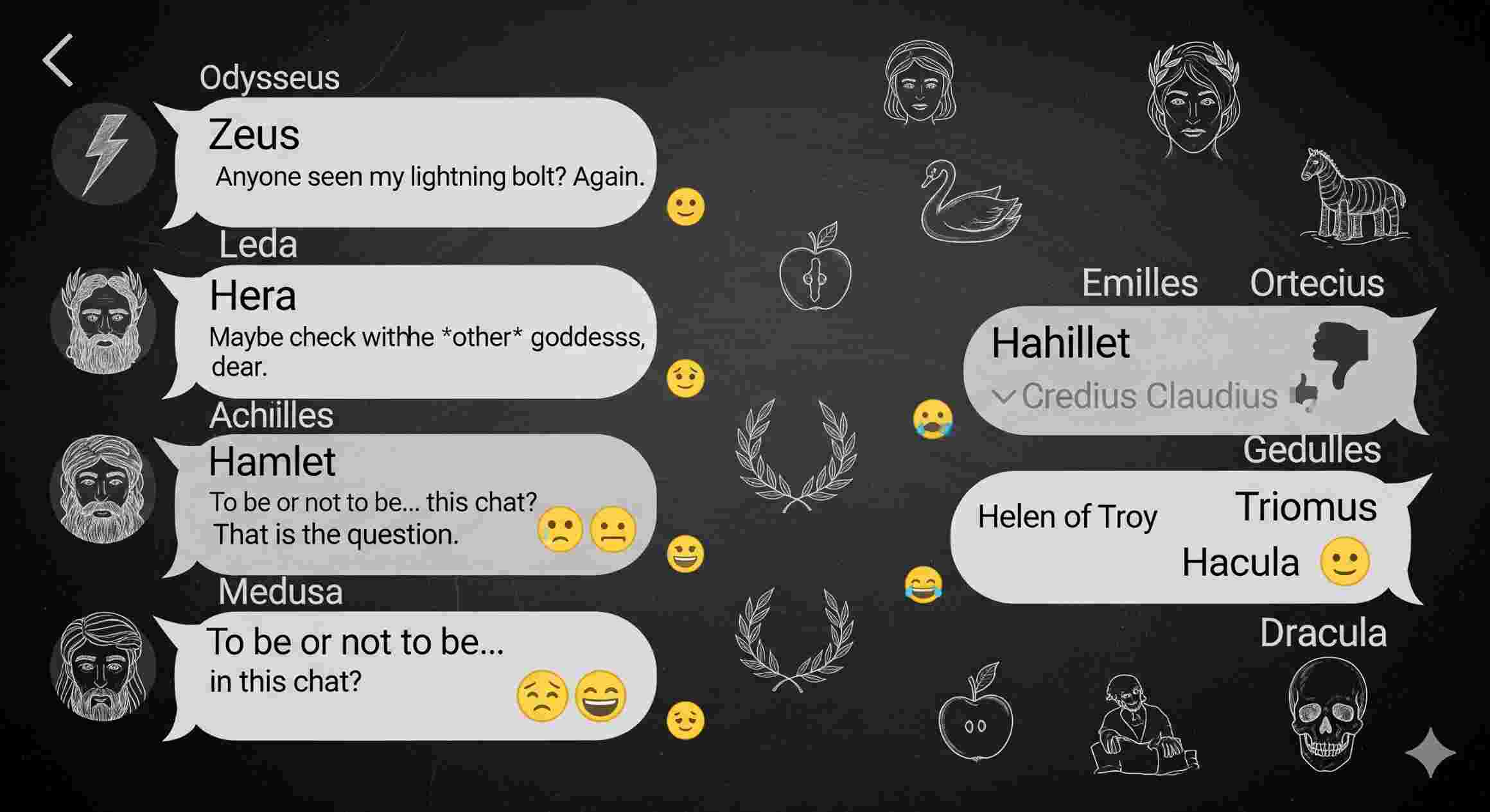A while back, I was knee-deep in a deployment that refused to cooperate—think rogue containers, misfired webhooks, and a CI pipeline that ghosted me harder than an old Tinder match. In my head, I imagined all the services and tools I was using just roasting each other in a group chat: Git, Jenkins, Docker… all going off in passive-aggressive WhatsApp messages.
That ridiculous thought got me thinking: if blank had WhatsApp, what would it look like? What kinds of chaotic, hilarious, or painfully relatable group chats would exist? I mentioned it once during a team retro, and 30 minutes later, we had three whiteboard pages filled with fictional screenshots and absurd character dynamics. It was weird. It was amazing.
So here’s a light-hearted, slightly unhinged guide to imagining what the digital world—or any world, really—might look like if everyone and everything had access to WhatsApp.
What Would Happen If History Had WhatsApp?
Imagine Julius Caesar, Cleopatra, and Genghis Khan in a “Conquerors Only” chat. You just know Caesar would be sending unnecessary thumbs-up emojis after every battle update.
Historical events would become group threads filled with drama and subtext. Picture Marie Antoinette casually dropping cake emojis while France burns. Or Albert Einstein trying to explain relativity in voice notes, followed by Newton leaving the group in frustration.
It’s a great mental exercise not just for laughs—but also for reimagining how we interpret history through modern lenses. Teachers, take note: you could absolutely turn this into a classroom project.
Would Fictional Characters Be Total Chaos in Group Chats?

Short answer? Yes. Long answer? Oh absolutely yes.
Think about it: the Hogwarts crew would have separate chats for each house. Gryffindor’s group would be 90% impulsive plans and near-death recaps. Slytherin’s? Just a pinned schedule of power moves and cryptic one-liners.
Or imagine the Avengers. Thor types in Old English with questionable grammar, Tony replies with GIFs, and Steve keeps sending well-meaning but annoying “Good morning, team!” messages at 6:00 AM. No one replies.
Fictional group chats let us expand character arcs in fun, unexpected ways. If you write or game, this is pure gold for worldbuilding.
Could Tech Tools Survive a WhatsApp Group?
Now this one hits close to home.
If you work in DevOps, imagine a group chat called “Dev-Life Crisis.” Docker complains about memory again. Jenkins keeps dropping broken build links. Git posts a screenshot of someone pushing to main at 2:00 AM. Meanwhile, Slack lurks silently, quietly judging everyone.
The dynamics would be hilarious—and a little too real. Like Zoom sending a “Can you hear me now?” message every 10 minutes, or Jira passive-aggressively tagging you on that one ticket you’ve ignored for a week.
Honestly, using if blank had WhatsApp as a creative tool for tech training or onboarding could make things more relatable, especially for new hires trying to learn the quirks of your stack.
How to Make Your Own “If Blank Had WhatsApp” Scenario

This is where the fun starts. Whether you’re building content for a workshop, school project, or just killing time during a sprint planning meeting, here’s how to create your own version.
Step-by-Step Method
Step 1: Pick Your “Blank”
It could be a time period, a fandom, a tech stack, a workplace scenario, or even inanimate objects. The more specific, the funnier.
Step 2: Define the Characters
Think of the roles involved. For example, if you’re doing “If Coffee Had WhatsApp,” maybe you’ve got Espresso (loud), Decaf (ignored), Oat Milk (trendy), and Instant (low self-esteem but reliable).
Step 3: Nail the Tone
Give each character or concept a voice. Use their unique tone to reflect real behavior, habits, or clichés. Make it exaggerated—that’s where the humor lives.
Step 4: Build the Chat
Use real WhatsApp format: timestamps, emojis, message edits, voice notes, and maybe the occasional awkward “This message was deleted.” It adds realism.
Step 5: Bonus Touch—Screenshots
Design fake chat screenshots using meme generators or design tools. This works great for presentations or social media posts.
Also Read: Why Hiring a Pedrovazpaulo Business Consultant Could Change Everything for Your Team
FAQ: The WhatsApp Edition
Is this just a meme format or can I actually use it for learning?
Definitely both. It’s a funny meme, yes—but it’s also a powerful tool for storytelling, creative writing, teaching, or simplifying complex systems. I’ve seen teams use this to explain cloud architecture to non-tech stakeholders. It works.
How do I come up with good character voices?
Start with real traits. If you’re personifying JavaScript, think: unpredictable, charming, sometimes annoying. Then lean into the stereotype. The more consistent your tone, the more hilarious your chat will be.
What tools can help me create WhatsApp-style visuals?
You can use Canva, Meme Generator, or even simple WhatsApp-style templates in Figma. There are mobile apps too that let you build fake chat screenshots for fun.
Can this be used in education or workplace settings?
Absolutely. Teachers use it to make literature engaging. Managers use it to onboard new employees. It humanizes systems, characters, or historical figures. Just keep it respectful and appropriate to your audience.
That’s a Group Chat I’d Join Any Day
Here’s the thing: using if blank had WhatsApp isn’t just about being clever. It’s a creative way to explore systems, characters, and even work processes from a human (and often hilarious) perspective. It makes things relatable. It makes people laugh. And sometimes, it even helps them learn.
So next time your brain hits a wall during a project or you’re stuck explaining version control to your cousin, try this: build a group chat. Imagine who would send voice notes, who would rage-quit, and who’d get muted forever.
Final thought: The weirder the combo, the better the chat. Now go stir up some group chat drama. Educationally, of course.
 aspectswebdesign.com
aspectswebdesign.com

